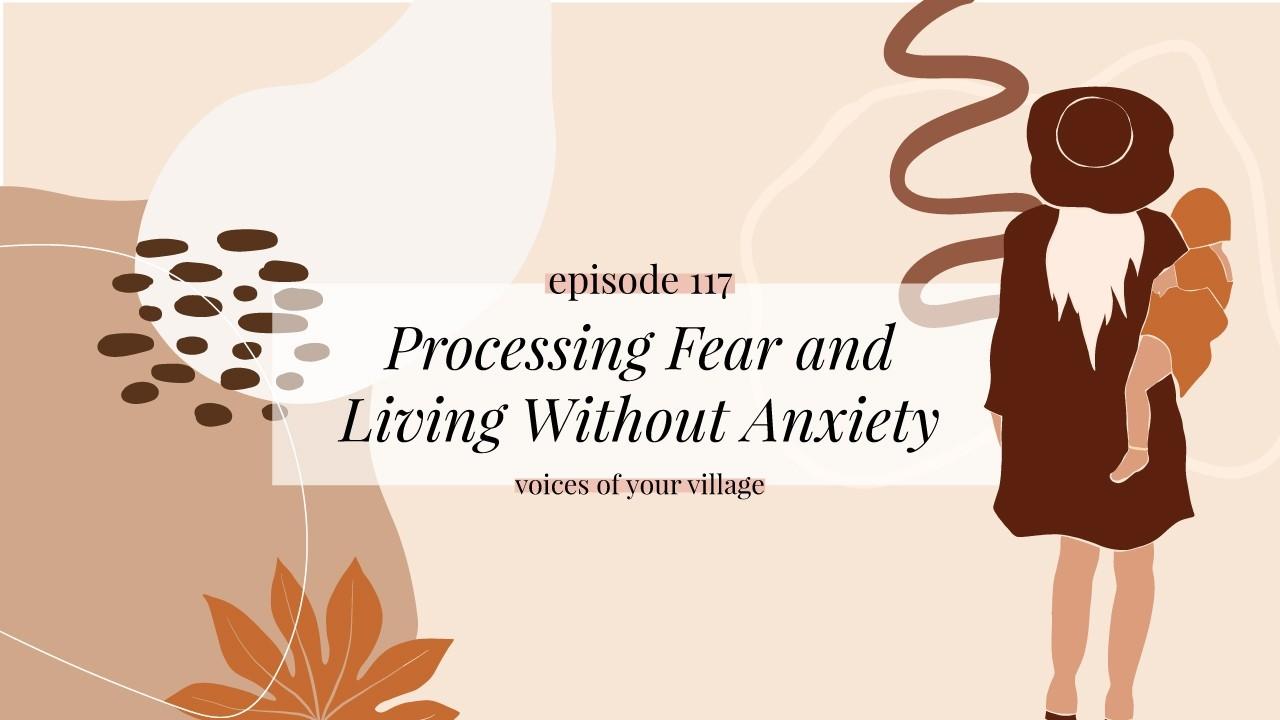Processing Fear and Living Without Anxiety

Hi Villagers! Welcome to another podcast episode and another beautiful week of being alive! I am excited to share this week’s episode with you all because, my friends, today we are talking about anxiety. This episode may bring some stuff up for you, you may have some feelings and I want you to hold space for them. I encourage you to allow these feelings to come up and to get curious about them. Feelings are communication. They are our body’s way of communicating things from our past and our subconscious to us.
Anxiety has never been higher in parenthood than it is right now.
To the extent that it has become a buzzword. So, let’s break it down. What is anxiety? Anxiety is when you’re stuck in fear. When you aren’t able to process fear, you get stuck in it. So, when we talk about anxiety it is important to remember that experiencing fear is very normal. It is when we get trapped in this fearful, dysregulated place that we experience anxiety.
In this episode I am going to give you all tools to identify fear, welcome it, hold space for it, process it, and then re-write the narrative.
When anxiety comes up, you are first going to start by noticing it in your body. I often feel it in my chest, it gets tight and my face gets hot. Or my hands tighten into a ball, my shoulders go to my ears, and my jaw clenches. First, you will notice anxiety physically because it is a rush of cortisol and your prefrontal cortex (rational thinking brain) shuts down. Our job is to notice this reaction and decide if this is something that we need to be anxious about. The key here is to regulate your physiological response, to calm your pumping cortisol so you can make an intentional decision.
Most of us operate from our subconscious, our social programming based on our experiences. There are two key types of anxiety. The first is trauma-induced. The second is intergenerational or learned reactions.
“There isn’t a point where you get enough information that then you feel calm.”
As with everything that we do, building awareness is key. Asking yourself, what is this triggering? What is my fear? I am afraid of… what? If someone you are in communication with is anxious, you are free to ask, what are they afraid of? Especially in these times, with health and harm being a top trigger of anxiety, the first step is to build anxiety awareness.
Once you have that awareness and you feel it build, you can notice your body’s physical reaction and intentionally pause to find your calm either through focused breathing, taking space, or moving your body. The whole goal of managing anxiety is to notice when it’s building and then find your calm.
“The coolest thing about this work is you can self-heal.”
You don’t have to live with anxiety. I did for a long time, it dictated so many things in my life. And learning to live without it was a game-changer. A lot of times when we are experiencing anxiety we may fall into patterns of codependency. One of the most empowering things is building the awareness to regulate yourself. That is true independence.
For the full episode and my complete thoughts on how to live without anxiety, click on the episode above. Let’s rewrite these patterns, my friend. You don’t have to live with anxiety, but first, you need to identify your anxiety. As always, in this village we strive for progress, not perfection.
Also, over on Instagram I am doing a series of posts about anxiety where you can find more information on what this process looks like. And next week on the podcast is one of my favorite episodes, where I dive deep with my friend Jess about anxiety in kids. Once you’ve given them a listen, shoot me an Insta DM. I am always interested to hear what my villagers think. Because babe, you know we’re all in this together.
